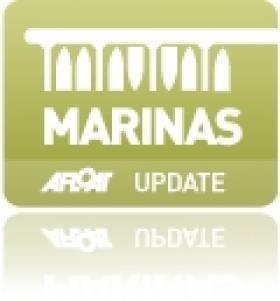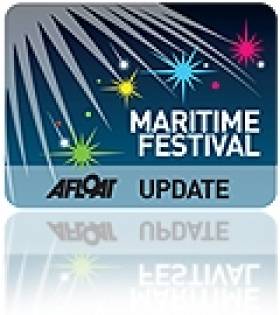Displaying items by tag: MalinWaters
#Marinas - Minister of State Joe McHugh will officially open the new €1.3 million Bunagee Marine Development on the Inishowen Peninsula tomorrow afternoon (Friday 9 June).
The new safe haven for coastal cruisers, including a breakwater and pontoons to accommodate 15 vessels, was developed by Donegal County Council as part of the major cross-border project Sail West.
It also forms part of a county-wide strategy to grow Donegal’s necklace of coastal tourism infrastructure and promote the county as a top marine destination in Europe, under the MalinWaters brand shared with Sligo, Northern Ireland’s maritime counties and Western Scotland.
Ahead of the marina's official opening, Donegal County Council Cathaoirleach Terence Slowey said: “We have a wonderful marine tourism product here in Donegal and the new Bunagee Marine Development is a great addition to our existing infrastructure.
“Situated close to the beautiful village of Culdaff, Bunagee is an ideal base that will give visitors the opportunity to explore the Inishowen Peninsula and the county.”
Minister McHugh will attend the official opening at Culdaff on Friday 9 June at 2.30pm.
The project was funded by the European Union’s INTERREG IVA Cross-border Programme managed by the Special EU Programmes Body. It was constructed by Deane Public Works, and Doran Consulting was awarded the contract as the consultant engineers.
New Facilities for Stranraer Marina Hoped to Boost Numbers
#MARINAS - The new shore block at Stranraer Marina is the latest project to benefit from the Sail West initiative across western Scotland, Northern Ireland and the northwest coast of Ireland.
As the Galloway Gazette reports, the new waterfront building comprises a permanent harbour office, coastguard base, showers and toilets, as well as a community education room.
“The ongoing development of the marina is key to branding Stranraer as a marine leisure destination," said local councillor Roberta Tuckfield.
"Plans to add more pontoons and another breakwater should bring in additional pleasure craft, increasing tourism numbers benefiting the whole town.”
The marina improvements have been made with the goals of boosting the number of marine leisure users in Stranraer, fitting in with Sail West and its cross-border MalinWaters marine tourism brand across the channel.
Sail West is an international scheme, headed by Donegal County Council and Larne Borough Council, which aims to encourage mariners to enjoy the North Channel coastlines of Scotland, Ireland and Northern Ireland.
Other projects recently supported under the rubric of the Sail West initiative include the new coastal marina facility at Ballycastle Harbour in north Antrim and this summer's Clipper Festival in Derry.
The Galloway Gazette has more on the story HERE.
SeaFest Celebrates Donegal's Coastal Heritage
The shores of Lough Swilly in Co Donegal will come alive with sails at SeaFest 2011 from 1-3 July, celebrating the region's unique coastal environment.
The weekend begins on Friday 1 July with the launch of MalinWaters, a new cross-border marine tourism initiative for the zone between the north of Ireland and western Scotland.
It's followed on the Saturday with a parade of sails and action in the Saldanha Cup, a traditional cruiser-racer sailing regatta that commemorates the 200th anniversary of the sinking of the frigate HMS Saldanha, with a course that takes on the wreck site of the ship near Ballymastocker Strand.
Among the myriad family events taking place on shore, SeaFest will also feature an abundance of Donegal's local food culture, such as fresh seafood from local waters, plus lamb, beef and pork from the county's field, prepared by talented chefs from the region.
For more details visit seafestloughswilly.com.


























































